EXPERIENCE PERIGUEUX

Overview
Périgueux is the capital city of the old province of Périgord that sits on the Isle River. It is a town known for its medieval and Renaissance architecture and its Gallo-Roman ruins. There are really two towns to explore in Périgueux, the medieval town and the roman town, as well as an imposing cathedral.
The city of Périgueux is attractive, however it is a sleepy provincial town. Its can be explored in about a day, but the Dordogne region is the backyard of Périgueux, where you can enjoy river trips and days out at castles or cave paintings at Les Eyzies.
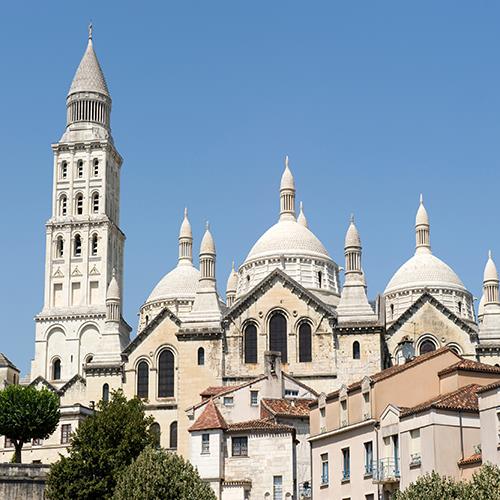
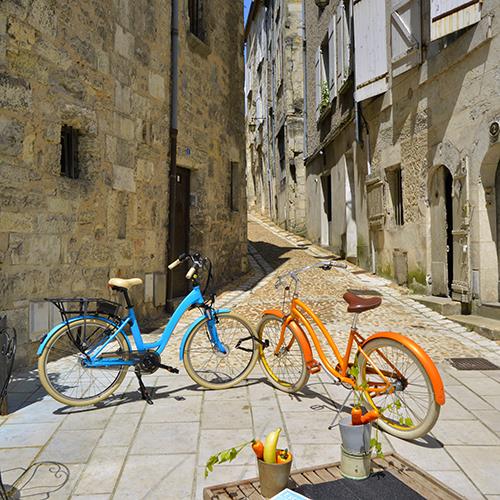
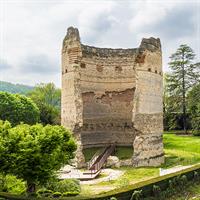
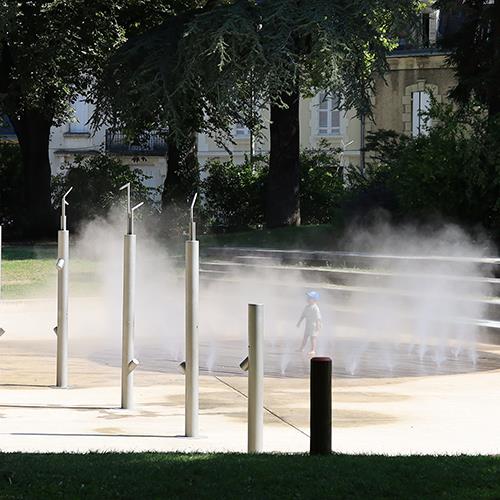
Explore Périgueux
Périgueux Cathedral and the Old Town. When you first arrive in Périgueux you'll notice the beautiful Saint front Cathedral which dominates the town center. The original church was built in about 1120 and changed in the 19th century by Paul Abadie who used it as a model for the design of the Sacre Coeur church in Montmarte. It's an astonishing building with big dimensions, and the five symmetrical domes and bell-tower that form its skyline are famous across the country. The perfect time to visit is when the organ is playing or there's a choral performance because the acoustics are amazing.
Upon entering the medieval town next to the cathedral, you will see the Mataguerre Tower The ramparts initially included 28 towers and 12 gates, but the Mataguerre Tower is the last of these. As you explore the medieval center of Périgueux you'll see several examples of houses that were owned by wealthy merchants. Rue Limogeanne is one of the best streets to see these half-timbered houses, you'll find yourself on it if you're shopping. Walk slowly to appreciate the lovely stone-built Renaissance architecture that closes in from both sites.
The Rue Eguillerie (Threadneedle Street) leads to the 14th century Masison du Patissier which has a very fine 16th century door and was once the residence of a well-known patissier who made the famous Périgueux ‘Paté de foie gras’. Rue Mignot is a narrow passage which was used in the filming of 'Jacqou Le Croquant' a popular film in France.
The center of ‘Paté de foie gras’ has lots of little squares, many of which have restaurants and cafes to stop and relax.
Located to the west of the current town center is the Roman Périgueux. This has smaller than the medieval center, but it is truly fascinating. The Vesunna Temple was built in the 2nd century AD and the remains of the 'cella', the sacred part, can still be seen. Only the priest could enter the cella in order to worship the Celtic goddess 'tutela Vesunna'. The tower is 88 ft high and 88 ft in diameter.
The Fallo Roan Vesunna Museum built over the remains of the roman villa. In 1959 while laying the foundations for apartment buildings workers dug up the vestiges of a resplendent Roman domus. The extend of what has survived is amazing, and in 2003 the site was covered with a glass building created by the acclaimed architect Jean Nouvel. Visiting the ground floor of the domus with the help of raised walkways, allows visitors to look down at painted plasterwork and mosaics. Ther are also display cases all around with pieces gathered at other local Roman sites, as well as others unearthed right here, including amphorae and plates.
In this part of town, you can see the remains of the Barriere Castle, a 12th century castle burnt down in the wars of religion. One of the gateways of teh ramparts, the Norman Gate, can also be seen. Named after invasions by the Vikings in the 9th century.
A public garden, Le Jardin des Arenes was once the site of the Roman Amphitheatre: though only ruins remain today. The elliptical shape of this beautiful garden will tell you a lot about what used to be here. In amongst the spruces, chestnut trees, fountains and lawns are a few isolated pillars, walls and arches from the original structure, while the rest of the stone was plundered to build medieval Périgueux.
Discover the Musée d’Art et d’Archéologie du Périgord. Located in the beautifully converted Augustinian convent you can explore the ancient history and prehistory of the Perigord as well as other regions of the world. The museum has a bit of everything from all sorts of times and places. There are ethonographic pieces from Oceania and Africa together with exquisite medieval art like an enamel statue of the Virgin Mary from the 1200s and stained-glass windows recovered from a nearby 14th century church. there's also a Roman lapidary collection and Neanderthal fossils discovered in caves near the famous system at Lascaux.


Culinary Specialties
The Dordogne region is synonymous with excellent food and drink, and this is made apparent as you explore the city of Perigueux and its specialty shops. Périgueux is especially known for its foie gras, or "fat liver," which comes from force-fed geese and ducks. On Rue Limogeanne you'll find everything from fromageries (cheese shops) to boulangeries (pastry shops), all offering a visual feast. You'll also find shops offering up the region's emblematic duck and geese specialties as well as fine wines and armagnacs.
The black truffle is another local specialty, and many fans of the delectable mushroom come to the area in autumn and winter when it can be found at some excellent prices, especially in mid-December during the Truffle Festival. Périgueux pâté has foie gas and black truffle and has been made in the town since at least the 1400s, while Périgueux sauce consists of roux, red white and chopped truffle and is excellent with anything from omelets to roasted duck or quail. Truffle markets are held during December to February in St Louis in Périgueux, and in a few local villages, most notably in Saint Genies and Brantome.
Walnuts in Périgord have an AOC label and are produced in large quantities by the orchards around the city and are in season around late-summer.

Get Outside
Voie Verte des Berges de l’Isle. Périgueux offers over 9-miles of greenway that crosses the Périgueux "agglo" from east to west. The full length of the route the path never leaves the banks of the River Isle and makes for a beautiful ride with unbeatable vistas of sights such as the Saint-Font Cathedral. This greenway is open to pedestrians, cyclists, rollerbladers and wheelchair uses and intersects with a whole network of trails all devised to let you explore the area without using a car.
Another way of seeing the best of Perigueux is by taking a canoe trip on the smooth waters of the Voie Bleue des Berges de l’Isle. The "Blueway" is 15-miles of calm waters from Trelissac in the east to Marsac in the west. There are 12 launch points on the river, as well as for canoe stations. There is also a place to rent paddle boards if you'd prefer to explore by river this way.
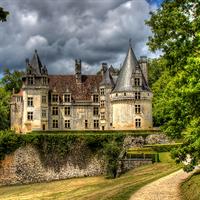
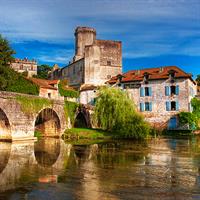
Attractions Nearby
For a change of scenery there are some excellent sights and attraction an easy drive from the town.
The Château de Puyguilhem is a classical French renaissance château, constructed in the 1500s with architecture as sublime as almost any you’ll find in the Loire Valley.
To go underground the Grotte de Tourtoirac can be reached in about 30 minutes outside of town. This cave system has only been on the map in the last couple of decades, having been discovered by cave-divers in 1995. The great thing about this is that the attraction has modern faculties like escalators, providing access for people with mobility issues.
Also worth a visit is the picturesque town of Brantome and the castle at Bourdeilles, both a little way north of Perigueux. And the popular Chateau de Hautefort is 25 miles east of the city, this is one of the most remarkable chateaux in the Dordogne and is now listed as a historical monument and is often claimed to be the most beautiful chateau in the region.